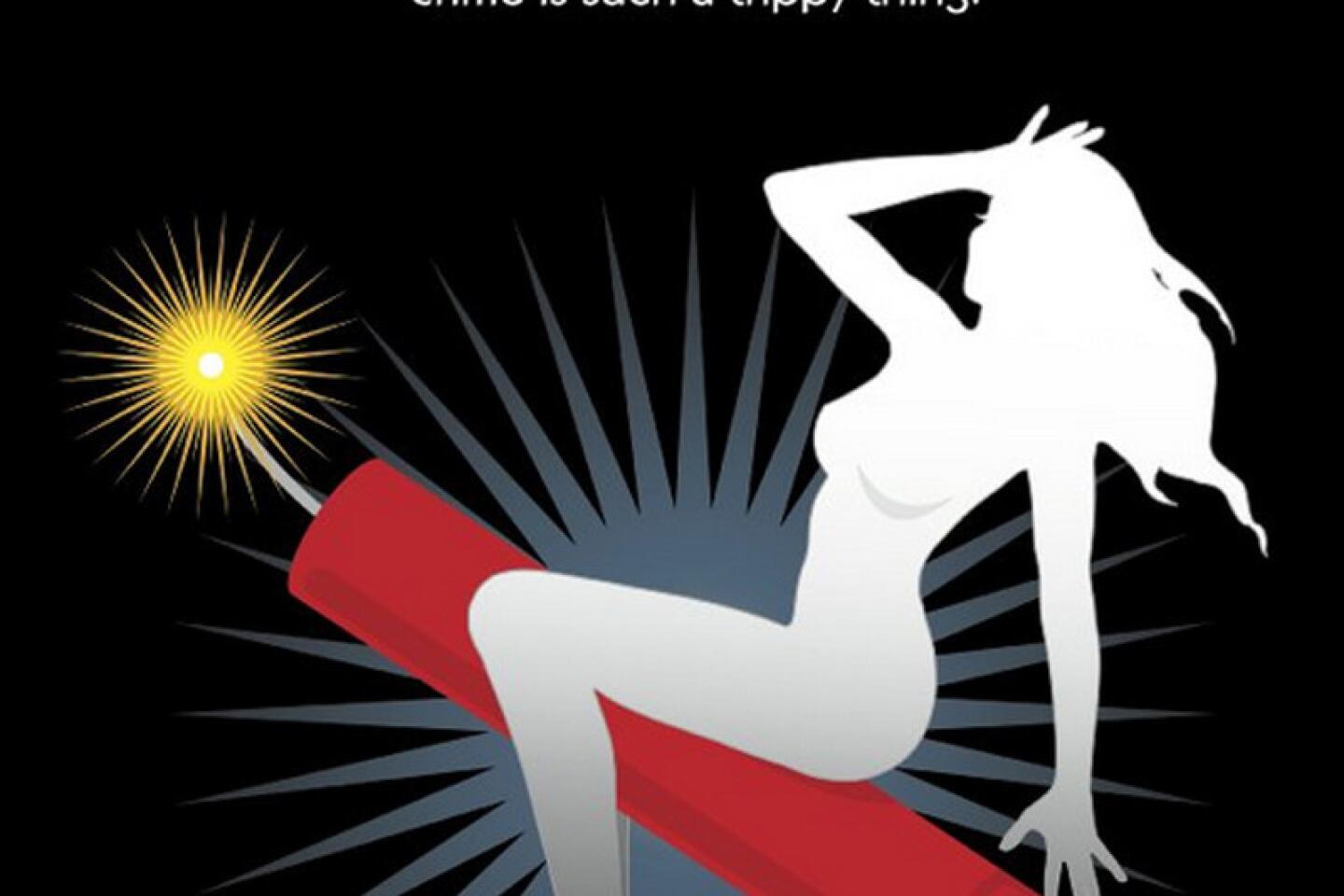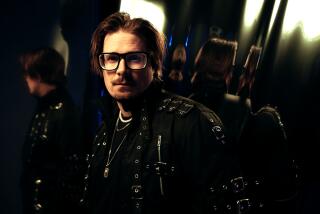Elmore Leonard’s love-hate relationship with Hollywood
Hollywood always loved Elmore Leonard. The prolific novelist-screenwriter, who died Tuesday at age 87, didn’t always return the affection.
Over the course of Leonard’s six-decade do-si-do with the entertainment industry, his plain-spoken prose provided the basis for dozens of movies and TV shows across several genres: westerns and crime pot-boilers, dramas and comedies.
The best of them capture the bestselling author’s identification with knock-around guys doing morally dubious things — usually under the threat of gun violence — and crackle with Leonard’s singular brand of street-wise cool.
FOR THE RECORD:
Elmore Leonard: In the Aug. 21 Calendar section, an article about movies and television programs made from writer Elmore Leonard’s works said that a series of westerns known as the Ranown Cycle was based on Leonard’s short story “The Captives.” Only the film “The Tall T” in that series was based on the story. In addition, the article misspelled the last name of director Delmer Daves as Davis. The article also gave the title of Leonard’s novel “Riding the Rap” as “Riding the Gap.”
But only a few managed to live up to his standard of excellence.
PHOTOS: Elmore Leonard | Career in pictures
Among them, Quentin Tarantino’s “Jackie Brown” (a 1997 adaptation of Leonard’s novel “Rum Punch”), the John Travolta-starring crime comedy “Get Shorty” (from the writer’s novel of the same name) and the FX television series “Justified,” based on a popular character featured in Leonard’s novels “Pronto” and “Riding the Gap.”
“I think it’s a terrific show,” Leonard told USA Today last year of “Justified.” “I love all the writing. And I’m amazed sometimes. They’ve got all the characters better than I put them on paper.”
On the flip side, this so-called Dickens of Detroit never made any mystery of his primary motivation for staying in Hollywood’s orbit — money — and was never shy to call foul on what he perceived as shoddy translations of his work.
In a 2009 interview with The Times, Leonard dismissed the 1969 adaptation of his novel “The Big Bounce” as “the second-worst movie ever made” — the worst being 2004’s big-screen version of “The Big Bounce.”
PHOTOS: Notable deaths of 2013
Elmore’s earliest adaptations and screenplays were written to feed the midcentury market demand for westerns. In 1956, his western-set short story “Moments of Vengeance” was adapted for the CBS anthology series “Schlitz Playhouse of Stars,” starring Ward Bond, Gene Nelson and Angie Dickinson. In the ‘50s and ‘60s, director Budd Boetticher, actor Randolph Scott and screenwriter Burt Kennedy collaborated on a series of seven dark, complex westerns known as the Ranown Cycle based on Leonard’s short story “The Captives.”
Leonard went on to write original screenplays for 1972’s “Joe Kidd,” starring Clint Eastwood as a bounty hunter pursuing a Mexican revolutionary, and 1974’s “Mr. Majestyk,” featuring Charles Bronson as a farmer battling the mob. But when the cultural appetite for cowboy stories dried up, Leonard aimed his abiding childhood fascination with outlaws in a different direction: toward the street.
His output expanded to encompass hit men and bomb makers, bungling burglars and menacing mobsters — a varied palette of colorful sociopaths, scam artists and stylized low-lifes caught up in capers involving ill-gotten gain. Blackmail, murder, philandering, above all, the well-placed double-cross.
Case in point: director Steven Soderbergh’s 1998 romantic drama “Out of Sight,” a faithful adaptation of Leonard’s novel of the same name that went on to earn an Oscar nomination for adapted screenplay. George Clooney’s smooth-talking career bank robber finds himself in a car trunk — a hostage drama, really — with a take-no-guff federal marshal (Jennifer Lopez). The two then team up to foil a home invasion/diamond heist by a posse of vicious criminals (led by Don Cheadle).
PHOTOS: Celebrities who died young
Moreover, Leonard’s street savvy was never hemmed in by geographical boundaries. In his books and films, it extends to avenues and boulevards across America — with Detroit and the South Florida of “Rum Punch” turning up most frequently. In “Get Shorty” and “Be Cool,” the writer showed a disdainful familiarity with Hollywood, setting loose Chili Palmer, the Miami loan shark-turned-entertainment industry macher (played by Travolta), who exploited the guilelessness of any number of easy Tinseltown marks.
Then there is “Justified,” which has racked up the Emmy nominations and critical accolades since hitting the air in 2010. Also based on the author’s short story “Fire in the Hole,” the series follows U.S. Marshal Raylan Givens (Timothy Olyphant), a gruff lawman transferred from Miami to his hometown in the hill country of eastern Kentucky, where he practices old western-style justice in the modern day, rankling the local crime muscle to no end in the process.
A pair of Leonard’s works — the crime novel “The Big Bounce” and the western short story “Three-Ten to Yuma” — managed to be adapted for the screen twice in the writer’s lifetime.
Directed by Delmer Davis, the gritty prisoner-transfer thriller “3:10 to Yuma” was one of Leonard’s first works to get the big screen blow-up, arriving in 1957 with Glenn Ford and Van Helfin in starring roles. Half a century later, James Mangold (“The Wolverine,” “Walk the Line”) directed a remake starring Russell Crowe and Christian Bale.
PHOTOS: Billion-dollar movie club
“Bounce” reached the screen first in 1969 as a vehicle for the then-married Ryan O’Neal and Leigh Taylor-Young. “I don’t think anybody in the picture knew what they were doing,” Leonard remarked of the film. The 2004 iteration starring Owen Wilson flopped at the box office and fared no better in Leonard’s estimation. “They shot in Hawaii,” he noted. “They would cut to surfers when they ran out of ideas.”
And Leonard’s page-to-screen influence seems set to continue from beyond the grave.
The writer’s 1978 crime novel “The Switch” has been adapted into the movie “Life of Crime,” which is scheduled to debut at the Toronto International Film Festival next month. Centering on two criminals (John Hawkes and Yasiin “Mos Def” Bey) who kidnap the wife (Jennifer Aniston) of a wealthy real estate developer for ransom, the film — of which Leonard presumably looked upon favorably, having served as its executive producer — is set to close the festival Sept. 14.
“The reason I’ve been able to sell all my books is because they look like they’re easy to shoot,” Leonard told British novelist Martin Amis in a Times-sponsored 1998 discussion. “They’re written in scenes, and the stories move through dialogue. I think the problem has been, in the past, that they’ve been taken too seriously. They haven’t been looked at as if there’s humor in them. And also the fact that when you bring a 350-page manuscript down to 120 pages, in my books, a lot of the good stuff is gone. It disappears. Because then you’re more interested in plot than you are in, say, character development.”
And if there’s one essential element in an Elmore Leonard story, it’s character.
Times staff writers Amy Kaufman and Susan King contributed to this report.
More to Read
Only good movies
Get the Indie Focus newsletter, Mark Olsen's weekly guide to the world of cinema.
You may occasionally receive promotional content from the Los Angeles Times.









